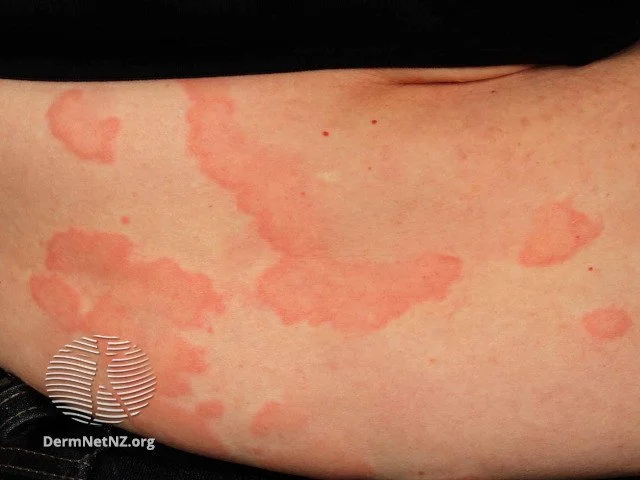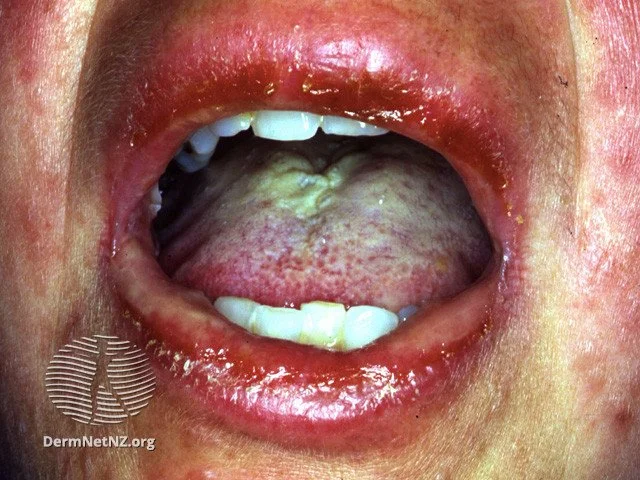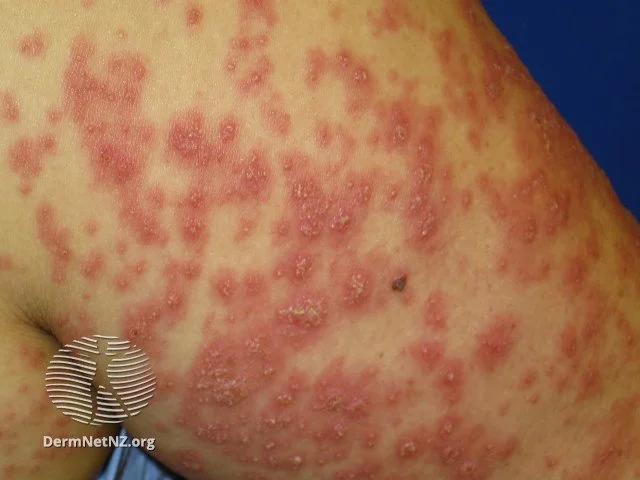
AlLergic Rashes
Hives from an allergic reaction, showing up on the skin as swollen, welt-like areas.
Credit: DermNet NZ
What are allergic rashes?
Allergic rashes encompass a variety of skin conditions, including contact dermatitis and rashes resulting from the ingestion of allergens, such as certain foods or medications. While food and medication allergies often manifest as hives (urticaria), medication allergies can sometimes present with more complex rash patterns.
What causes allergic rashes?
Allergic rashes can arise from contact with an allergen or from ingestion of foods or medications. True allergies are primarily mediated by histamine released from mast cells, leading to increased blood flow and skin inflammation. Drug-induced rashes, however, can occur through additional mechanisms aside from histamine release.
What are the symptoms of allergic rashes?
The symptoms of allergic rashes can vary depending on the underlying cause. Most food allergies are classified as "true allergies" and commonly result in urticaria (hives) and itching. Severe symptoms such as tongue swelling, shortness of breath, lightheadedness, and nausea may also occur. In such cases, immediate medical attention is essential.
Drug-induced rashes can vary significantly in their presentation. Symptoms can appear anywhere from minutes to weeks after ingestion of the medication. Possible symptoms include, but are not limited to:
Flat, red areas or bumps, potentially localized or widespread
Blistering, which may be limited or widespread, including the oral cavity (a potential sign of Stevens-Johnson syndrome, requiring immediate medical attention)
Red, target-like lesions (another potential sign of Stevens-Johnson syndrome)
Small pimple-like pustules
Red or purple spots that don't lighten when pressed
If you experience any of the above symptoms after starting a new medication, consult your healthcare provider immediately.
How are allergic rashes treated?
Treatment strategies for allergic rashes depend on identifying the allergen and avoiding future exposure. Specific treatments vary based on the type of rash, associated symptoms, and underlying cause. Common treatments include:
Antihistamines (e.g., diphenhydramine, loratadine, cetirizine, or famotidine)
Oral steroids (e.g., prednisone or methylprednisolone)
Referral for allergy or patch testing
In severe cases, hospitalization may be required for adequate treatment.
An example of oral involvement in Stevens-Johnson syndrome, which causes the inside of the mouth to become ulcerated and sore.
Credit: DermNet NZ
An example of a drug eruption from a medication, the morbilliform or “measles-like” rash that is common from antibiotics.
Credit: DermNet NZ
An example of AGEP (Acute generalised exanthematous pustulosis), a medication reaction, which shows up as tiny pustular lesions on the skin.
Credit: DermNet NZ




